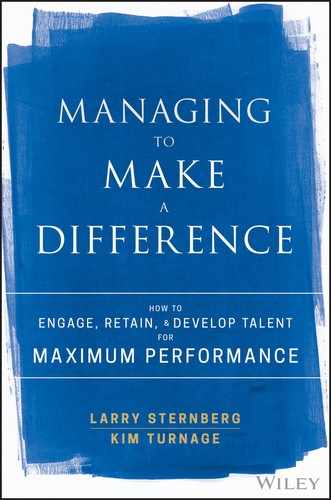Chapter 57
Address Bad Behavior
This chapter is related to the previous chapter, but the focus is on bad (undesirable, inappropriate, unethical, or immoral) behavior rather than on poor performance. This may seem like a very straightforward topic at first. You may be thinking, “Larry and Kim, this is not even worthy of discussion. Bad behavior should be punished. End of story.” It turns out to be a much more challenging topic than it might appear because you, as a manager, have to answer two questions:
- Just how bad was the behavior? Was it a violation of etiquette or ethics?
- What should the consequences be?
First, it is important to understand that what counts as bad behavior in one culture might well be characterized as perfectly acceptable in another. For example, in some organizations, being late to meetings is considered disrespectful toward the other participants, and therefore “bad behavior” of the variety that is considered rude, but not unethical. In other organizations, not being on time to meetings is the norm. It is routinely tolerated and, therefore, not even a violation of etiquette.
As we have said, it is vitally important to understand that the stated values of the organization are not the actual values. Every employee is a natural cultural anthropologist who learns the actual values of an organization by observation.
- What behaviors are rewarded?
- What behaviors are condemned and punished?
- What behaviors are ignored?
Ultimately managers and leaders, through their action or inaction, determine the organization's official answers to these questions, no matter what is written or formally stated.
To further complicate matters, it is also important to understand that all of this is a moving target. The answers to these questions evolve over time. In every community of people, there is frequent discussion—judgmental discussion—about the behavior of others. This is how a community confirms and adjusts its written and unwritten code of behavior. Right now, for example, our standards for the use of mobile devices and computers in meetings is in flux. Is it rude to check emails and texts during a meeting? Is it okay in some meetings, but not in others? In situations in which it is not okay, how should the organization respond?
As a manager, you are accountable to determine the final answers to these questions in your department. It is sometimes a struggle to arrive at the answer that is appropriate for each individual situation. This is difficult. We would likely tolerate our number one salesperson being late to meetings even if our culture labeled that behavior as disrespectful. But we would not tolerate disrespect in the form of racial slurs. Somewhere between those two situations there is a line, but we cannot tell you exactly where it is.
No matter where the line is, there are some behaviors that should be treated with zero tolerance. Recently in the United States, we have seen situations in which egregious behaviors have become institutionalized. Here are some examples. In certain organizations, rapes are not properly investigated, nor are the rapists held accountable. Known product defects causing injury, illness, and death are intentionally covered up. Corners are cut on safety practices to reduce costs. Child abuse and domestic abuse are tolerated, and known abusers are not held accountable. Bribery is tolerated to achieve business goals. Stealing from customers is encouraged to achieve sales goals.
Greater oversight is not the answer to reducing bad behavior. As a manager, you should be proactive. You should make honesty and integrity absolute tickets to admission for all employees and nonnegotiable conditions of continuing employment. You should make strong and clear statements about the organization's commitment to doing the right things right. You should walk your talk. When someone exhibits unethical or immoral behaviors, you should take swift and unequivocal action to hold him or her accountable. Zero tolerance. You should make it easy and safe for people to blow the whistle, and you should reward people who shine the light on unethical or dishonest behavior.
Here is an example of how easily dishonesty can creep into a culture. Many organizations require a doctor's note for certain absences. Every employee knows where they can get a doctor's note. When an employee needs a day off for some reason (but is not sick), he or she brings in a note. You know no one was sick. He or she knows you know, and you have just condoned dishonesty in this situation. It is a slippery slope. It becomes easier to condone the next deception. Trust is eroded, and this generates more dysfunctional behavior.
How would this look different if you just gave the employee the day off, without requiring this sham? You might not have the authority to change this now, but someday you will have that authority. We hope you remember this discussion. You can shape a healthier culture.
There is no experiment in this chapter. Experimenting is inappropriate on matters of ethics and morals.
To minimize bad behavior, select people with impeccable honesty and integrity. Clarify what behaviors are acceptable and unacceptable. Tailor the consequences of unacceptable behavior to the person and the situation. Clarify what behaviors are in the zero-tolerance zone, and respond rapidly when people behave in those ways. Finally, reward those who bring bad behavior to light. Remember that what you do speaks louder than what you say. If you do this effectively, bad behavior will occur occasionally, but it will not become institutionalized.
